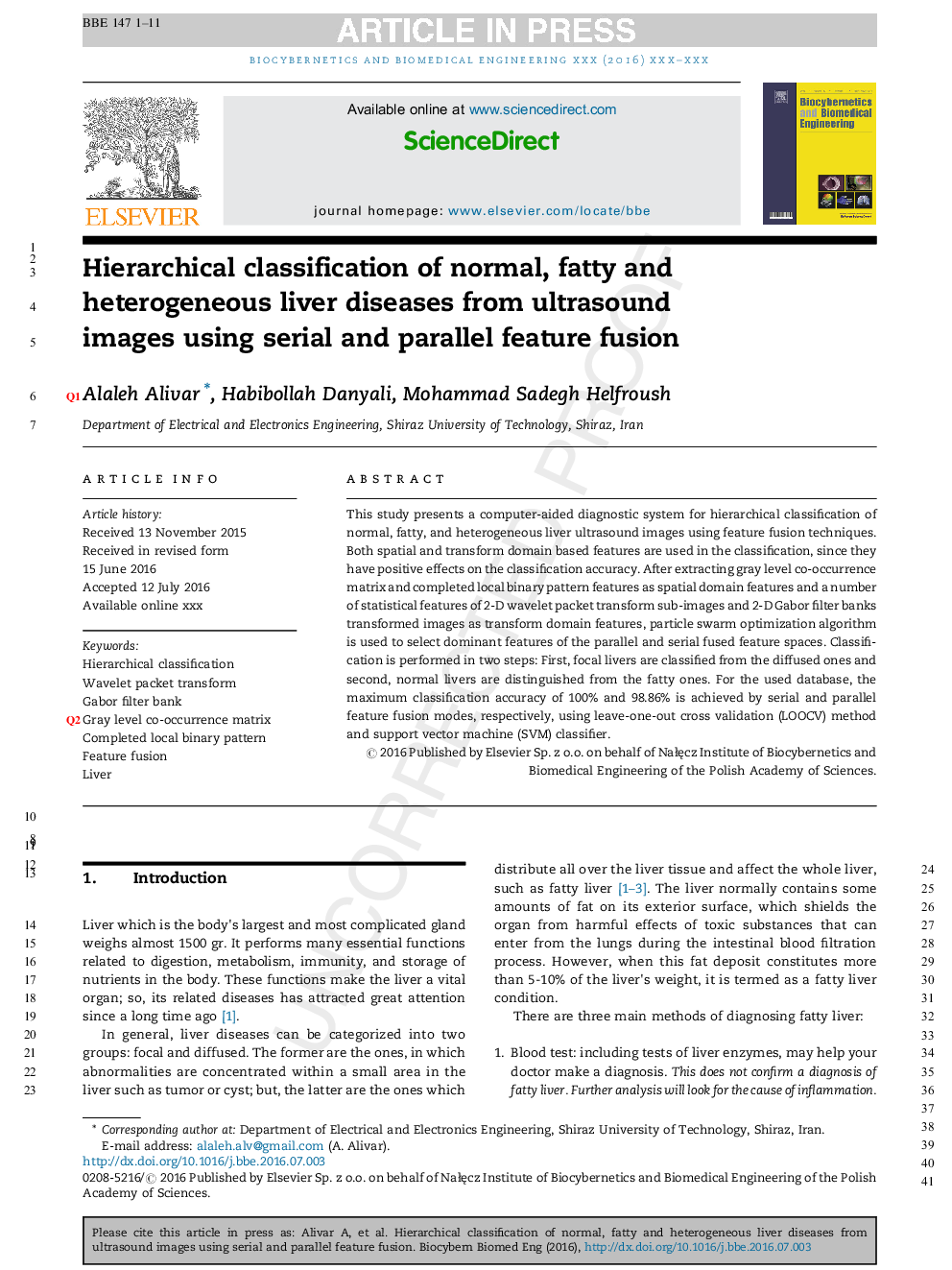| Article ID | Journal | Published Year | Pages | File Type |
|---|---|---|---|---|
| 6484272 | Biocybernetics and Biomedical Engineering | 2016 | 11 Pages |
Abstract
This study presents a computer-aided diagnostic system for hierarchical classification of normal, fatty, and heterogeneous liver ultrasound images using feature fusion techniques. Both spatial and transform domain based features are used in the classification, since they have positive effects on the classification accuracy. After extracting gray level co-occurrence matrix and completed local binary pattern features as spatial domain features and a number of statistical features of 2-D wavelet packet transform sub-images and 2-D Gabor filter banks transformed images as transform domain features, particle swarm optimization algorithm is used to select dominant features of the parallel and serial fused feature spaces. Classification is performed in two steps: First, focal livers are classified from the diffused ones and second, normal livers are distinguished from the fatty ones. For the used database, the maximum classification accuracy of 100% and 98.86% is achieved by serial and parallel feature fusion modes, respectively, using leave-one-out cross validation (LOOCV) method and support vector machine (SVM) classifier.
Keywords
Related Topics
Physical Sciences and Engineering
Chemical Engineering
Bioengineering
Authors
Alaleh Alivar, Habibollah Danyali, Mohammad Sadegh Helfroush,
